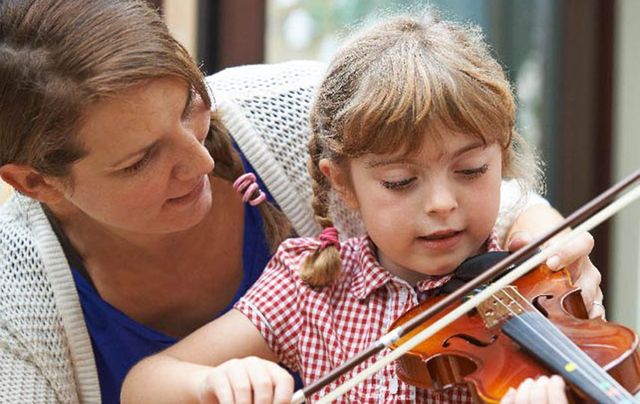In this IrishCentral series, we'll look at the process of starting to play an instrument in the traditional Irish style that you'll find in seisiúins around world.
This guide is written from a beginner's perspective, by a beginner, and doesn't cover in-depth topics for each instrument. In the first part of the series, we looked at choosing an instrument.
If you have additional tips and tricks you think a starting player should consider, let us know in the comments below.
Part two: Find a tutor
To some extent, finding a teacher will depend on what instrument you choose.
It’s perfectly possible to learn to play without professional help, but the added benefit of having a teacher who corrects basic mistakes you might not know you’re making is invaluable.
It’s also worth considering that, for many people, the forced timetable for practice that lessons provide can be as valuable as the lessons themselves. After all, the first question at every session will be "how did you get on with your practice this week?"
Read more
Real-life tuition
A first port of call should be Comhaltas Ceoltoirí Éireann, a cultural body that promotes Irish music and tradition worldwide. They have branches all over the world, with a concentration in North America and Europe, but a few in Australia and elsewhere, too.
Each branch will have different teaching abilities based on the teachers who are available in your area, but their club model has the added benefit of social events and they’re internationally recognized.
If Comhaltas doesn't have a branch near you, there may be a freelance teacher or another school nearby.
The first thing to try is a simple Google search for the name of your instrument and your area. Even if that doesn't turn up a teacher, it might still turn up a player, who can point you in the right direction or may consider private lessons.
You can also investigate local folk festivals or Irish societies, which often have better connections and will be able to help.
Online options
If finding a real-life teacher is impossible, you have a handful of other options.
Skype lessons are a perfectly valid form of tuition, with many of the advantages of real-life tuition. Assuming you can follow instructions without a teacher physically moving your hands, the biggest drawback is the time delay in online chat, which makes it impossible for students and teachers to play together.
Another fantastic resource is the Online Academy of Irish Music. The OAIM runs courses over a vast range of instruments and abilities and even gives access to the first few lessons for free. Lessons use videos, mp3s and PDFs allowing you to learn at your own pace, re-do lessons as often as you like and all in your own time.
Other sites include http://blaynechastain.com/i-teach and http://irishguitarpod.com/lessons/.
Teach yourself
If you still can’t find a teacher, self-tuition is possible. Find a good book, and shell out for the accompanying CD.
Unlike pop and rock music, a song isn’t just a song; many have several names, and some tunes have no name at all (you’ll sometimes see these listed as ‘gan ainm’, literally ‘no name’ in Irish). Be sure to check a European retailer like Amazon.co.uk if you can't find an appropriate book on the USA or .com sites.
YouTube can be a fantastic resource for both tunes and simple lessons and a simple search should unearth many Irish instrumental channels such as Tradlessons and Irish Music Academy.
The first thing to learn is where the notes are on your instrument – CDEFGAB and so forth. Sites like The Session have tune catalogs in simple notation, rather than sheet music, and have MIDI downloads so you can hear the tune and how long each note is played. This will let you start playing before learning sheet music, although many players and teachers would strongly encourage learning to read musical notation long-term.
If you are teaching yourself, it’s important to set a timetable for yourself and stick to it. Clear at least 30 minutes once a week to sit down and move on to the next "lesson" in your book, just like you’d do in a real-life lesson, and practice for shorter periods several times a week.
A good technique for keeping track of this is committing to practicing just a few minutes a day – 5 or 10 – and ticking days off on a calendar when you do. After a few days, you’ll have a string of successful days marked off, and you won’t want to break the chain. And sometimes you’ll find yourself enjoying it so much you’ll practice for longer than the allotted time.
It's also important to go to as many seisiúins as you can and even just listen if you don't feel confident enough yet to participate, but remember that a traditional session is the best place to make your mistakes. So may other people will be playing that an odd note here or there will not be noticed.
In part three of the series, we'll take a look at the different types of traditional tunes and good tune recommendations to get you started.
You can look back at part one of the series and choosing your instrument here.
Read more
* Originally published in September 2013.




Comments